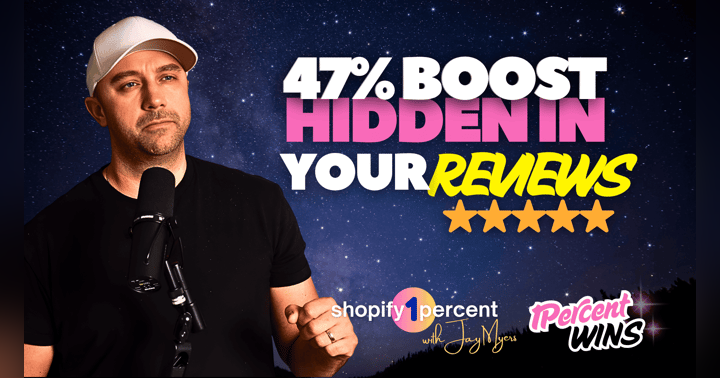Why Asking for Full Payment Upfront Might Be Killing Your Shopify Conversions (And What to Do Instead)

You know what sucks? Losing a sale because someone didn’t want to pay full price today for a product that won’t even ship for 8 weeks.
On this week’s Shopify1Percent podcast, I sat down with Diana Birsan, Shopify product manager turned founder of Downpay, to talk about a problem that’s far more common (and costly) than most merchants realize: rigid, inflexible checkout experiences for high-ticket, made-to-order, or pre-order products.
Diana’s background is wild. She was behind some of the key infrastructure at Shopify that powers subscriptions, identity, and merchant logins. Then she pitched a new way to handle flexible payments inside Shopify. Her team built the APIs, and after leaving the company, she returned as a founder to build Downpay — the app that now uses those very APIs to solve a huge pain point for merchants.
And guess what? In its first year alone, Downpay processed over $50 million in GMV. Yeah, this is not a fringe tool. It’s a real revenue accelerator.
So if you sell custom, made-to-order, or high-value products on Shopify, keep reading — this post might unlock your next growth lever.
The Problem with Full Price Upfront
Let’s be real. If someone’s buying a $6,000 sauna, a custom engagement ring, or even a $500 designer lamp that takes 12 weeks to ship, they’re going to hesitate before punching in that full payment. It’s not just sticker shock — it’s trust, it’s timing, it’s cash flow.
In fact, according to a survey by Pymnts.com, 67% of consumers say flexible payment options influence their decision to complete a purchase. And when it comes to high-ticket items, that number is even higher.
But here’s the kicker: most Shopify stores just aren’t set up to handle that kind of flexibility. They’re either stuck using hacks (like fake discounts and split orders) or forced into third-party BNPL services that charge 6–10% per transaction.
That’s where Downpay comes in.
The Downpay Advantage: Real Use Cases, Real Results
Downpay gives merchants the ability to accept partial payments at checkout, store the customer’s card on file, and collect the remainder later — either automatically or manually, on your own terms.
And it’s not just theory. Diana shared stories of Shopify merchants seeing 40–47% increases in conversion after implementing Downpay. That’s not a typo.
Here’s why it works:
-
It removes friction at the point of purchase
-
It builds trust by showing the brand understands how customers actually buy expensive items
-
It reduces chargebacks and support tickets because expectations are clear
-
It plays into buyer psychology — especially the sunk cost fallacy (once people put money down, they’re far less likely to abandon the purchase)
One merchant selling custom lighting and furniture went from "pretty good conversions" to "vendor-of-choice" status after adding Downpay, purely because they became easier to buy from. That’s the Shopify growth edge right there.
How to Implement Downpay Without Screwing Up Your UX
Worried it’ll mess up your checkout? Don’t be.
Downpay plugs into Shopify’s native checkout. No janky workarounds. No extra orders. No broken analytics. The app creates a single order marked as partially paid, and everything flows through Shopify as expected.
You can trigger the remaining payment in a bunch of different ways:
-
Automatically X days after purchase
-
When the product ships
-
After a manual review or final customization
-
Or let the customer pay manually via invoice
You can even use Shopify Flow to build automated logic: send reminders, authorize cards, notify staff — all based on your fulfillment triggers.
And the best part? Merchants have full control over the deposit amount. Want to test 20%, 50%, or even $0 upfront to drive urgency? Go for it.
Bonus Tip: Use Deposits as a Marketing Lever
One of the coolest parts of the conversation was talking about how merchants can use deposits not just as a payment feature but as a growth strategy.
You can:
-
Offer early access to VIPs with $0 deposits
-
Gate product drops behind a small upfront fee
-
Lock in limited inventory for customers who commit
-
Use partial payments as a replacement for waitlists or “coming soon” emails
It’s not just about payment — it’s about creating buying intent and locking it in. Think like a car dealership: once someone leaves a deposit, they’re mentally sold.
Final Thoughts
Diana’s journey from Shopify PM to founder of Downpay is a masterclass in spotting a gap in the ecosystem and building for it. If you’re selling high-value, custom, or preorder products on Shopify and still asking for full payment upfront, you’re probably leaving money on the table — or worse, scaring customers away.
Flexible payment options like Downpay are a no-brainer for the Shopify merchant who wants to scale without sacrificing trust or revenue.
If you want to learn more or try it out, check out https://www.getdownpay.com. They even have a 14-day free trial.
Want more 1% strategies like this to grow your Shopify store? Subscribe to the podcast and follow along.











